Mandalay was established by the highly admired King named Mindon, for his new capital and the focal point for Buddhist teachings, in 1857AD to fulfill an ancient Buddhist prophecy. There were only two kings ruled over on this last Burmese Capital, King Mindon (1852 to 1878) and King Thibaw (1879 to 1885). When the British took the entire country in 1885, the later king was exiled to Ratnagiri, India and Yangon was chosen as their capital. Although Mandalay didn’t survive long as the “Golden City”, it remains as an important cultural hub & Buddhist religious centre with myriad glittering pagodas dotting all corners of the region’s landscape and over 300,000 of country’s monks and nuns still make their home in Mandalay area.
As of the country’s culturally important city, one can surprisingly find several artists & craftsmen using the same skill and methods as were employed by their forefathers.Mandalay was established by the highly admired King named Mindon, for his new capital and the focal point for Buddhist teachings, in 1857AD to fulfill an ancient Buddhist prophecy. There were only two kings ruled over on this last Burmese Capital, King Mindon (1852 to 1878) and King Thibaw (1879 to 1885). When the British took the entire country in 1885, the later king was exiled to Ratnagiri, India and Yangon was chosen as their capital. Although Mandalay didn’t survive long as the “Golden City”, it remains as an important cultural hub & Buddhist religious centre with myriad glittering pagodas dotting all corners of the region’s landscape and over 300,000 of country’s monks and nuns still make their home in Mandalay area. As of the country’s culturally important city, one can surprisingly find several artists & craftsmen using the same skill and methods as were employed by their forefathers.
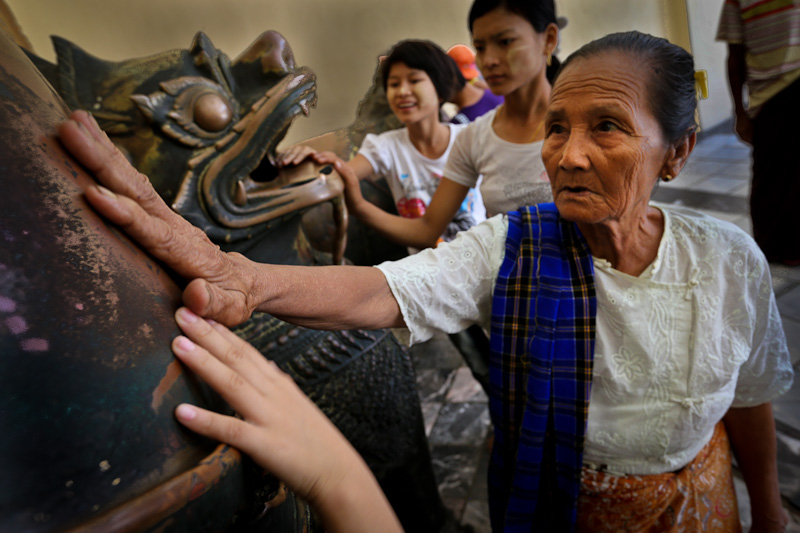
In Mandalay, we visited Mahamuni temple, Mahamuni is the most sacred Buddhist religious site of all upper Myanmar. The temple houses 4-m high Buddha image casted in bronze and heavily gilded with gold leafs about 15-cm thick and thus the image is virtually out of shape.
Not far from the gilded Buddha statue, in a courtyard of Mahamuni temple there are six Khmer bronze statues – three lions, a three-headed elephant and two warriors – that originally stood as guardians of Cambodia’s Angkor Wat temple. The statues of the warriors are reputed to have miraculous healing qualities. Legends tell that rubbing a body part of either of the statues will cure an affliction in the corresponding part of your own body. When these statues were originally brought to the Maha Muni temple following a long and circuitous journey around Southeast Asia, there were no healing legends associated with them. After centuries at the temple the statues came to be regarded as having healing powers.
 moving a Buddha statue, Mahamuni temple, Mandalay
moving a Buddha statue, Mahamuni temple, Mandalay
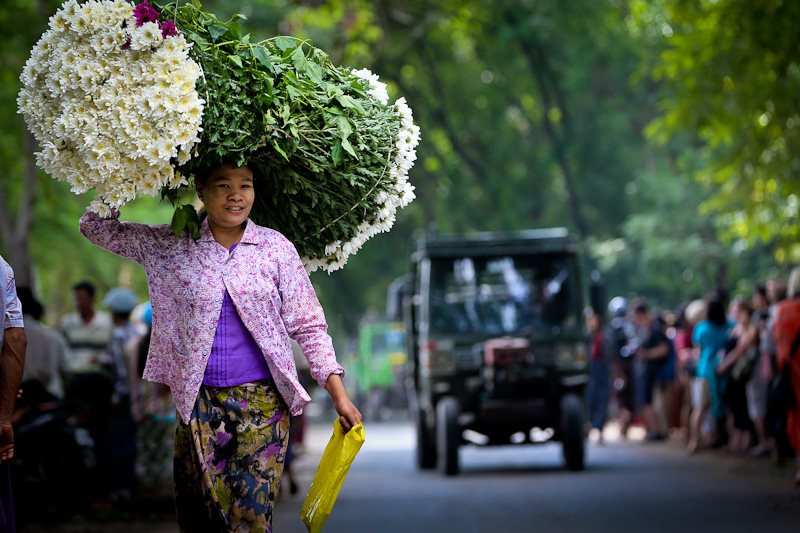
Flower market on the roadside along the way to the old British Hill Station of Pyin Oo Lwin
Ubein bridge also known as the world’s longest bridge using teak woods, this bridge was accredited to U Bein (Mr. Thin) who was said to be a clerk. He wisely utilized old teak planks from demolished Inwa Palace to connect Amarapura and a sizable village across the Thaungthaman Lake, where the water is fed from Ayarwaddy River. The bridge is 1.2km long, having 804-rooms, and used 1088 teak posts where some of those have been replaced with concrete base. The construction work started in 1848 and completed in 1851. It is best visited just before sunset to take a romantic walk on the bridge. The photo enthusiastic should take a rowing boat where the bridge reflected in the water with different light conditions before sunset.

The pride of Mingun, if not for Mandalay or even for the entire nation, as it is always refers as “The World Largest (Intact) Bell”! King Bodawpaya had it casted in 1808 on an island of Ayarwaddy River to dedicate to his gigantic pagoda. Having 90-tonnes, it is claimed to be the largest hung, un-cracked, working bell in the world, although there is a bell in Moscow, which is three times larger than Mingun bell but cracked. Originally, it was supported with huge teak posts but now replaced with the steels frames after the 1838 earthquake.


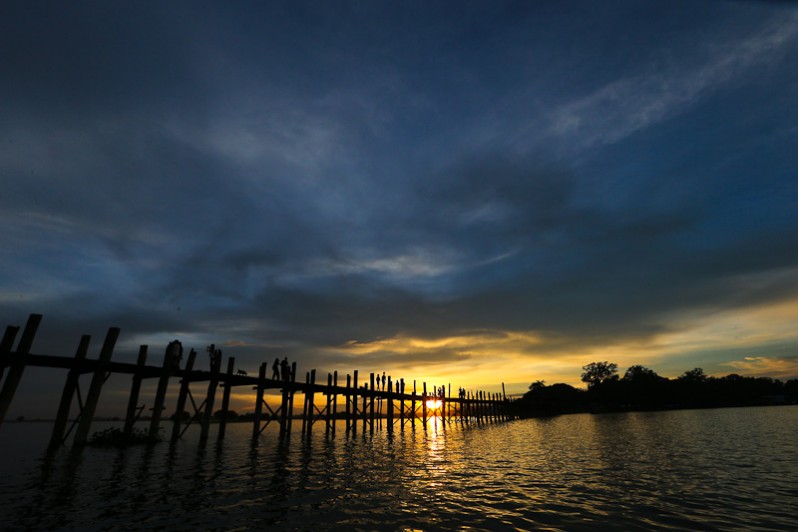
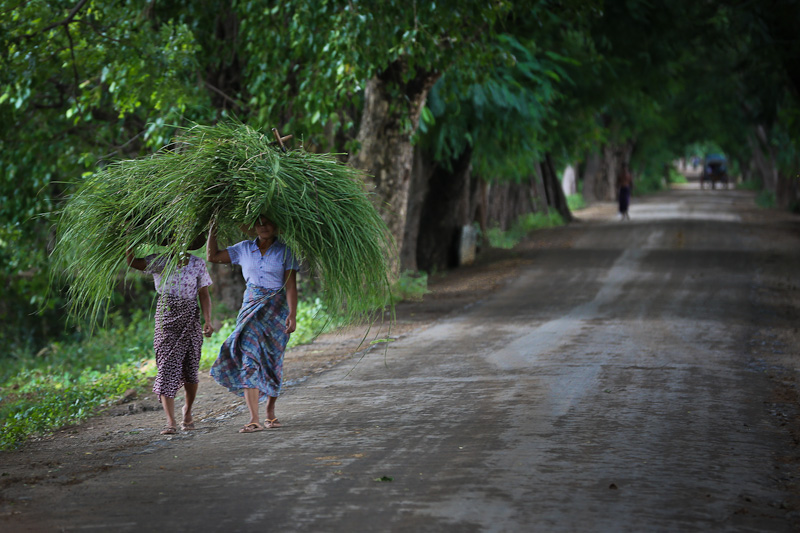
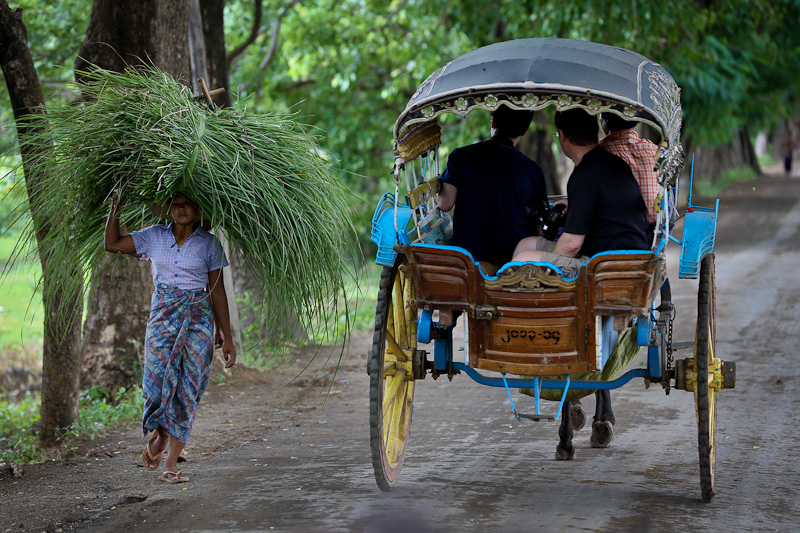

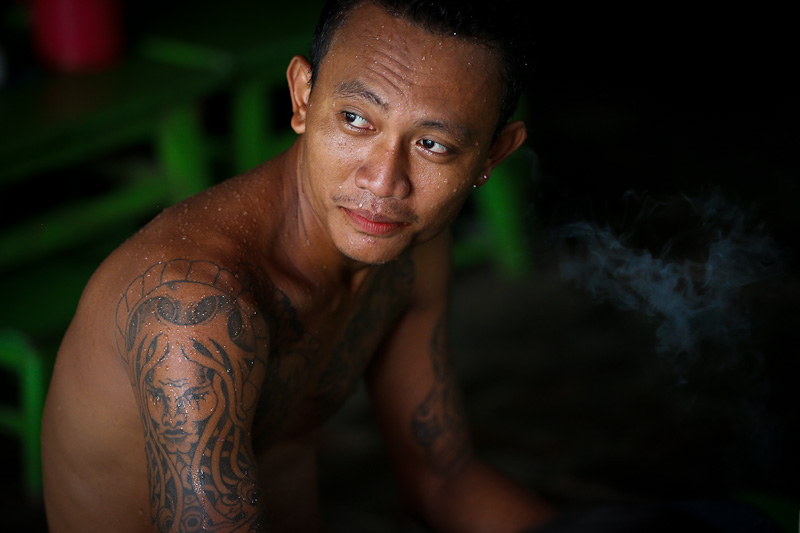
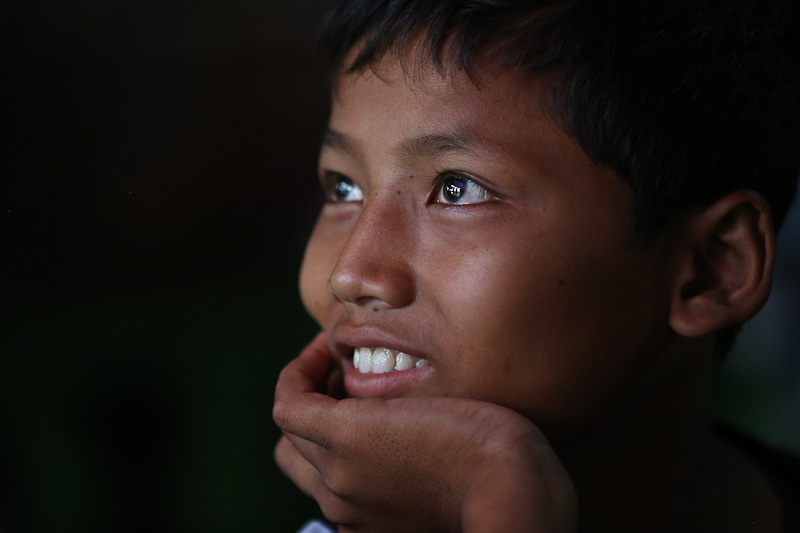



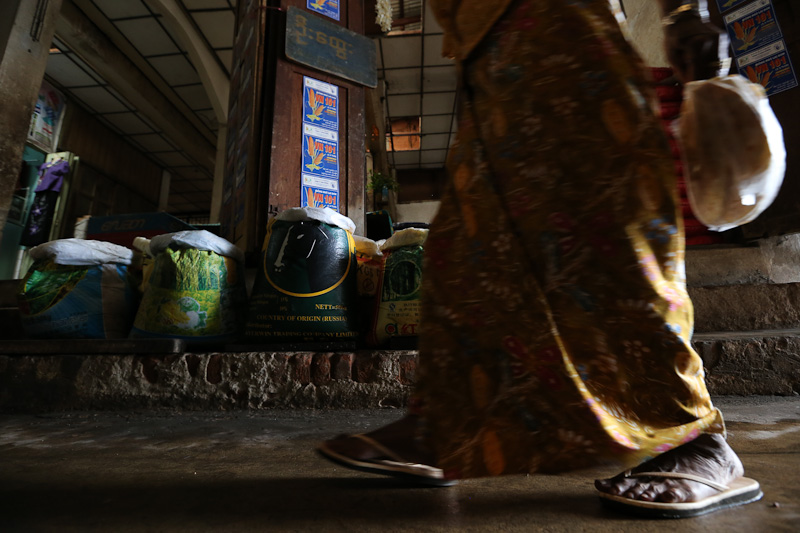
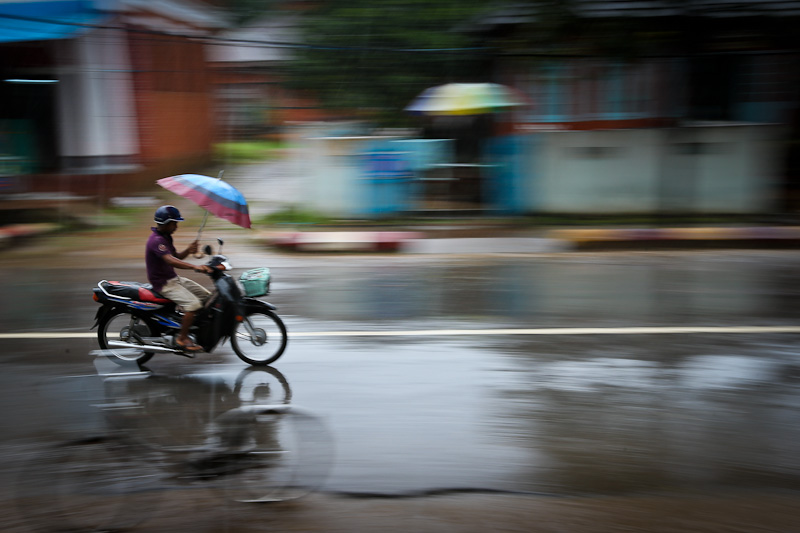


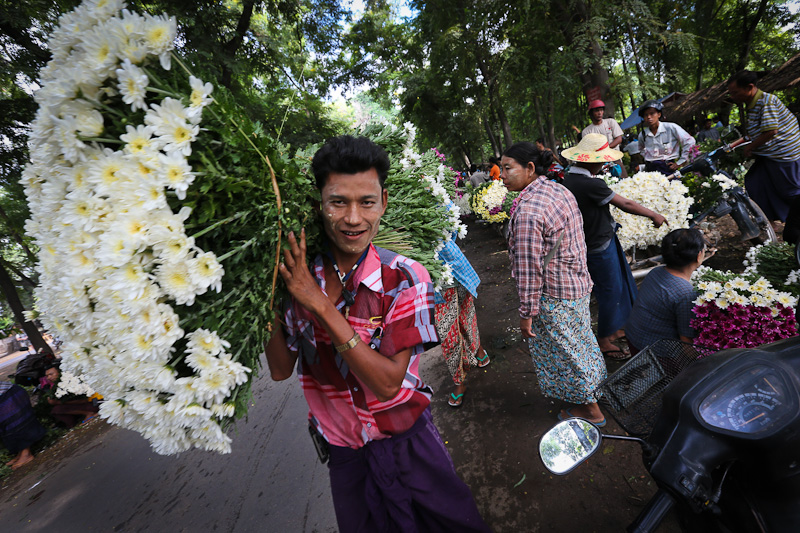
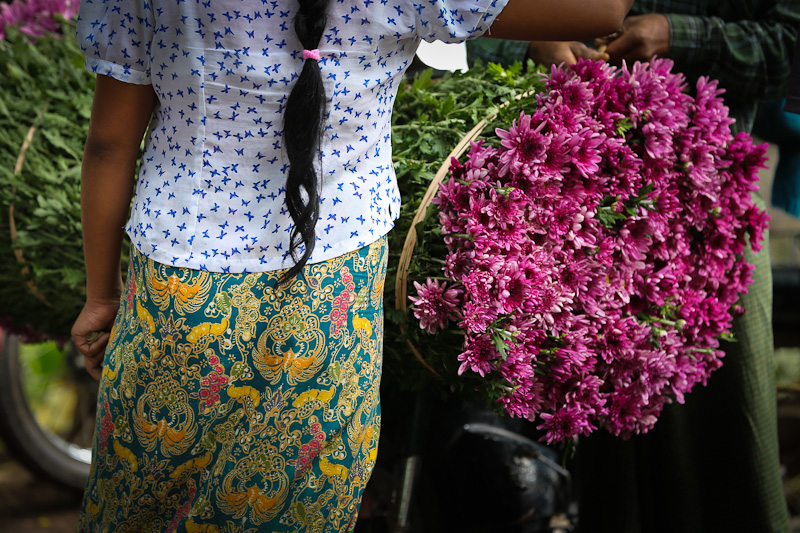



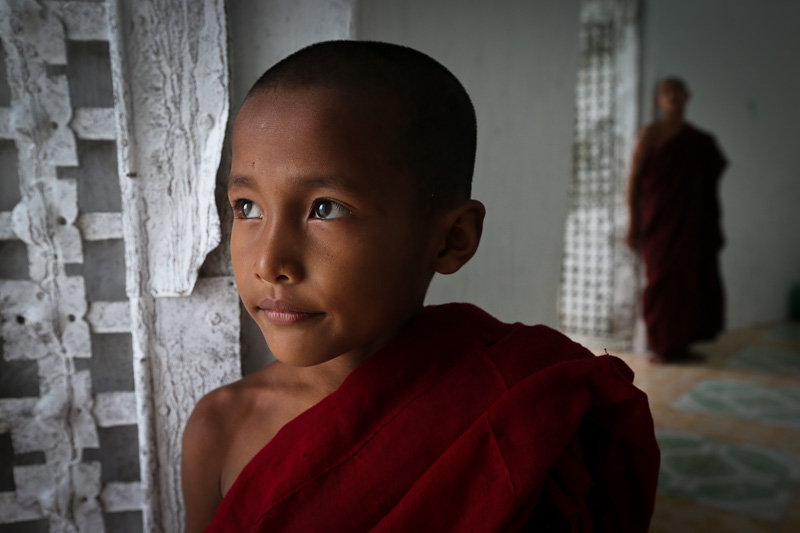







Great photos…. specially love 1st one seems like pontoon bridge in Kumbh Mela